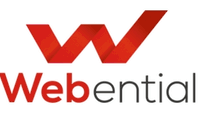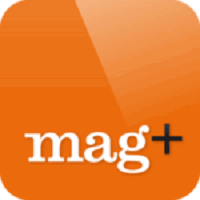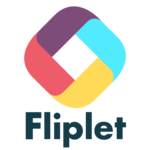Description

Frontegg

Webential
Comprehensive Overview: Frontegg vs Webential
Frontegg and Webential are two distinct entities in the tech industry, each focusing on different areas and offering unique solutions to their respective markets. Here’s a comprehensive overview of each, highlighting their primary functions, target markets, market share, user base, and key differentiating factors.
Frontegg
a) Primary Functions and Target Markets:
- Primary Functions:
- Frontegg is primarily known for providing a user management platform that helps developers incorporate user authentication and management features into their SaaS applications. This includes tools for managing sign-ups, logins, access controls, multi-factor authentication, SSO, and more.
- The platform is designed to offer comprehensive user management features out-of-the-box, which can be quickly integrated into any application.
- Target Markets:
- Frontegg’s target market primarily consists of SaaS application developers looking to streamline their user management processes.
- It also appeals to companies aiming to enhance their applications with robust security and user management capabilities without significantly increasing development time.
b) Market Share and User Base:
- Frontegg is considered a niche player in the user management and authentication sector. It might not possess a massive market share compared to giants like Okta or Auth0, but it is well-regarded within its segment for providing developer-friendly and highly integrative solutions.
- The user base typically comprises small-to-medium enterprises (SMEs) and startups, especially those seeking quick integration and flexibility.
c) Key Differentiating Factors:
- Frontegg differentiates itself with a rapid integration process, ease of use, and a wide array of user management features that can be embedded into applications.
- It offers developers flexibility by supporting a range of integrations and customizations, allowing businesses to tailor the solution to their specific needs.
Webential
a) Primary Functions and Target Markets:
- Primary Functions:
- Webential focuses on providing digital marketing, web development, mobile app development, and dedicated resource hiring services.
- It acts as a digital transformation partner, helping businesses to build and refine their online presence through comprehensive digital strategies and solutions.
- Target Markets:
- The target market for Webential includes businesses of various sizes seeking to enhance their digital marketing efforts, improve their online platforms, or develop new web and mobile applications.
- It caters to companies looking to outsource digital services or expand their current capabilities without extensive in-house resources.
b) Market Share and User Base:
- In the broad space of digital agencies and IT service providers, Webential competes with numerous global and local firms. Its market share can vary significantly based on the specific service and the geographic region.
- The user base is diverse, ranging from small businesses to larger organizations that need support in digital marketing, web design, and development services.
c) Key Differentiating Factors:
- Webential distinguishes itself through a strong emphasis on offering flexible hiring models, such as dedicated teams, which allow companies to scale resources up or down based on project needs.
- It provides a comprehensive suite of services along with an extensive talent pool, ensuring businesses have access to the right expertise for their projects.
Comparison Summary
- Functionality: While Frontegg is specialized in user management and authentication solutions primarily for SaaS applications, Webential is broader, covering digital marketing and development services.
- Target Market: Frontegg focuses on developers and SaaS companies, whereas Webential serves a wider range of industries looking for digital transformation.
- Market Position: Frontegg holds a specific niche within the user management landscape, while Webential is part of a broader digital services marketplace.
- Differentiators: Frontegg excels in flexibility and rapid integration for developers, whereas Webential offers versatile hiring models and a full suite of digital services to its clients.
When choosing between these two, it largely comes down to the specific needs of the business—whether they need user authentication solutions or a comprehensive digital development and marketing partner.
Contact Info

Year founded :
2019
+1 234-567-8992
Not Available
United States
http://www.linkedin.com/company/frontegg

Year founded :
2007
+61 402 543 197
Not Available
Australia
http://www.linkedin.com/company/webential
Feature Similarity Breakdown: Frontegg, Webential
As of my last update, Frontegg and Webential offer different services, so their feature sets will inherently reflect their distinct focuses. Here's a general comparison based on typical offerings:
a) Core Features in Common
Frontegg:
- Primarily focused on providing user management solutions (authentication, authorization, etc.)
- Offers a customer self-service dashboard
- Integrates user access management with enterprise applications
Webential:
- More geared towards providing digital services, including web and mobile app development, perhaps combined with some user management features depending on specific offerings
- May include content and brand strategies that include user insights
Common Features:
- Both may offer some form of user management and authentication features
- API integrations for seamless embedding into existing workflows
- Customizable interface aspects to tailor user experience
b) User Interface Comparison
Frontegg's User Interface:
- Typically, a UI focused on developers for easier integration of authentication and authorization services.
- Clean, developer-friendly dashboards that allow managing user roles, permissions, and analytics.
- UI elements designed to provide clarity and ease of use, focusing on tech teams and admin roles.
Webential's User Interface:
- Depending on the specific services, the UI could be more varied, offering not only technical but also design elements catering to broader digital services.
- Likely includes interfaces that cater to both developers and marketers, offering dashboards with insights into user engagement and project management.
- Emphasizes adaptive UI/UX designs tailored to suit customer-specific branding needs.
c) Unique Features
Frontegg:
- Extensive focus on B2B SaaS enablement through a full-stack user management platform.
- Supports multi-tenancy and provides advanced security features like SSO, social logins, and auditing.
- Built specifically for seamless integration into existing applications with minimal friction.
Webential:
- Broader range of digital services beyond just user management, possibly including SEO optimization, digital marketing strategies, and cross-platform development.
- Custom digital solutions tailored to client specifications, which may include bespoke software development.
- Focus on end-to-end digital presence management, possibly providing more consultative and design-oriented services compared to Frontegg.
Overall, Frontegg and Webential cater to different market needs—Frontegg with its SaaS-focused, highly technical tools, and Webential with a wider range of digital and development services. Therefore, the key to selecting between them or assessing them lies in understanding the specific needs of your project or business challenge.
Features

Not Available

Not Available
Best Fit Use Cases: Frontegg, Webential
Frontegg:
a) Best Fit Use Cases:
- SaaS Companies: Frontegg is particularly suited for SaaS businesses that need to implement robust user management and authentication features. This includes startups to large-scale SaaS providers that require user authentication, authorization, and management features rapidly without building from scratch.
- Developers and Product Managers: Those who want to integrate secure, customizable login and management capabilities into their applications without investing heavily in backend development will find Frontegg beneficial.
- Companies Needing Scalable Authentication: Businesses expecting rapid user growth can use Frontegg to handle scalable authentication and user lifecycle management.
- Organizations Focused on Security Compliance: Frontegg helps maintain secure authentication protocols, which is crucial for companies operating in industries with strict security and compliance requirements.
d) Industry Vertical & Company Size:
- Frontegg caters to technology companies, especially those in SaaS, across various stages of growth. Small to mid-sized companies benefit from rapid deployment and scalability, while large enterprises can leverage its compliance and security capabilities.
Webential:
b) Preferred Use Scenarios:
- Custom Software Development Needs: Webential is an ideal choice for companies requiring customized digital solutions, including web development, mobile app development, and digital marketing services.
- Businesses Seeking Comprehensive Digital Solutions: Companies that prefer a one-stop-shop for digital transformation, including design, development, and online marketing services, will find Webential fitting.
- Organizations Lacking In-house Development Teams: Businesses without internal tech teams can rely on Webential for outsourced development services.
- Companies Requiring Dedicated Resources: Webential offers dedicated teams which are ideal for businesses looking for committed resources to handle long-term projects.
d) Industry Vertical & Company Size:
- Webential serves a broad range of industries by offering tailor-made solutions, including e-commerce, healthcare, real estate, and more. They cater to small to medium enterprises needing flexible outsourcing options, as well as larger organizations requiring specific project expertise or staff augmentation.
In summary, Frontegg is best for technology-oriented businesses, especially SaaS, looking for scalable and secure user management solutions, while Webential excels in providing comprehensive IT and development services for various business needs and industries.
Pricing

Pricing Not Available

Pricing Not Available
Metrics History
Metrics History
Comparing teamSize across companies
Conclusion & Final Verdict: Frontegg vs Webential
To provide a well-rounded conclusion and final verdict for Frontegg and Webential, we'll look at aspects such as functionality, usability, flexibility, pricing, and customer support.
Conclusion and Final Verdict
a) Best Overall Value
Frontegg appears to offer the best overall value if your primary requirements include robust user management capabilities, feature-rich SaaS application development tools, and seamless integration options. However, the ultimate choice will highly depend on the specific needs and context of the user or organization.
b) Pros and Cons
Frontegg
-
Pros:
- Comprehensive suite of tools designed for SaaS application development.
- Strong emphasis on user management and authentication features, which can significantly streamline development processes.
- Easy integration with existing tech stacks.
- Offers scalability options that adapt to the growing needs of an application.
-
Cons:
- Potentially higher cost due to the extensive features; may be overboard for smaller projects.
- Steeper learning curve due to the complexity of available features.
Webential
-
Pros:
- Broad spectrum of services, including web development, digital marketing, and design.
- Offers more customizable solutions catering to businesses requiring a diverse set of digital services.
- Likely to be more cost-effective for smaller or less complex applications.
- Strong focus on user experience and design.
-
Cons:
- May lack some of the specialized SaaS features provided by Frontegg.
- Could involve more integration work to achieve the same level of functionality for specialized applications.
c) Recommendations
-
For SaaS Companies and Developers:
- Choose Frontegg if your focus is primarily on building complex applications requiring advanced user management and integration features. It is especially recommended for products expected to scale significantly.
-
For Broader Digital Services Needs:
- Opt for Webential if your organization requires a mix of digital marketing, design, and more basic development services, or if you prioritize cost-efficiency over specialized SaaS tooling.
-
Decision Strategy:
- Define your primary goals and requirements in detail. Compare these with the feature sets offered by both platforms.
- Consider long-term plans and select a product that scales or adapts to potential future needs.
- Evaluate your team’s technical expertise to handle the learning curve associated with each product.
- Pilot testing may be beneficial to better understand how each tool fits into existing workflows.
Ultimately, both products have specific benefits tailored to different use cases, and the best choice will depend on aligning their strengths with your unique business requirements.
Add to compare
Add similar companies




